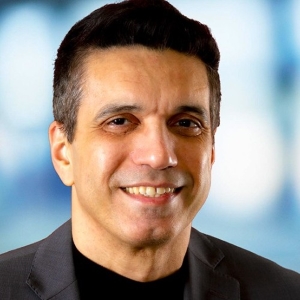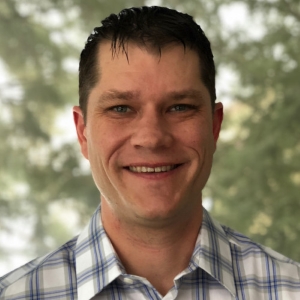Danielle Applestone: What happens in your brain when you ride a roller coaster? Pretty much everything. And it typically starts during that first long slow, upward climb. As you begin to anticipate what’s ahead, the part of your brain that processes logic, that part that tells you this is all perfectly safe, is essentially told to pipe down and take a seat. Imagining the sensations to come: high speeds, the feeling of falling, and flying, and looping. Your body readies for danger. As you’re doing that slow first climb, a release of glucose causes your heart rate to increase. What might have been a passive 70 beats per minute a short time ago, spikes as high as 155 beats. That sends increased amounts of oxygen through your body, fueling it for a fight or flight reaction to danger. Your pupils dilate allowing for the maximum threat assessment.
Then, eyes wide, you process thousands of bits of visual information. In brief, extreme moments like that one, forces as high as five Gs restrict blood flow. Once back on terra firma, riders often report a sense of increased energy, wakefulness and euphoria, the byproduct of a hormone release during their experience.
What no one noticed, and what few realize, is another brain hard at work during that ride. A brain retrieving and processing massive amounts of real time data from tens of thousands of sensors. Measuring stresses, monitoring speeds, noting vehicle proximities, allowing for predictive maintenance. It’s that super brain that keeps the ride running safely and smoothly. Most people don’t know about the super machines that power that brain, constantly and routinely generating superhuman calculations with unprecedented speed. This is the story of how those worlds come together. That of the mind boggling thrill ride of the computerized brain that runs it, and of the technology that powers it all.
My name is Danielle Applestone: engineer, entrepreneur, and sometimes a fan of roller coasters. I love the speed, the heights? Not so much.
Speaker: Please keep your hands and feet inside while the show is in motion.
Danielle Applestone: You’re listening to Technology Powers X, an original podcast from Dell Technologies. In this episode, technology powers the best ride of your life. If you really wonder whether it’s worth it, powering today’s roller coasters with complex algorithms and billions of pieces of data from edge based AI, you’ll want to meet this woman.
Miriam Kenly: I grew up going to theme parks of my parents, and I’ve always loved roller coasters. It’s one of my favorite parts of a theme park.
Danielle Applestone: That’s Miriam Kenley. Over the years, she loved riding roller coasters with her family. But one day, seven years ago, after an experience at a major theme park, her feelings started to change.
Miriam Kenly: So, my cousin and I got on the roller coaster, and there was a seatbelt that attaches between the seat of the roller coaster, and the shoulder harness that goes over your head, because it was a roller coaster that goes upside down, and does corkscrews and all sorts of things. So we clip in the seatbelt, and then we pull the shoulder harnesses down and we could hear them click like they normally do, when you are secure in the roller coaster.
Danielle Applestone: The ride operator performed a check, making sure the shoulder harnesses were secure.
Miriam Kenly: And then as soon as we were about to leave the station, my cousin and I could both hear the harness mechanism kind of click, almost like it sounds when you’re getting off the ride. So of course, we both kind of panic, like oh no, is our latch undone? Is everybody’s latch undone? We tried to call the operator over, but it was too late. We were already rolling out of the station, and our harnesses were loose. So we were still seat-belted between the harness and the seat, but the shoulder harness of the roller coaster was loose.
Danielle Applestone: In vain, they tried to warn the operator, but the train was in motion. Making it’s slow, suspenseful climb up that first hill.
Miriam Kenly: There is like a little bit of a hill you go up, so we did have time to talk to each other. He was 15 at the time and I was 23. So I was like, “Okay, this is what we’re going to do. We’re just going to hold this as close as we can to our bodies. It’s going to be okay.”
Danielle Applestone: Hanging on as tight as they could, eyes tightly shut, Miriam Kenly and her cousin placed themselves at the mercy of physics.
Miriam Kenly: When we went upside down, it felt like, okay, we’re going to just drop all the way to the ground. There’s nothing holding it in here. There is a moment of weightlessness, whether you’re harnessed in or not. It just felt like maybe this is what we always feel like, but it feels more intense because I know this isn’t as safe as it should be.
Danielle Applestone: Two agonizingly long minutes later, it was over.
Miriam Kenly: My cousin and I are both pretty mild mannered, so before we pulled all the way into the station, just in that little slow part as you’re coming in, we both felt like we were about to pass out, I think just from relief of getting back safely. And then when we got out, we didn’t yell at the ride operator or anything, but we just told them like, “Hey, this was completely wide open. I think you need to maybe call someone. I don’t know if this is going to do this again, but it felt really dangerous to be out there.” And he seemed shocked, he was just like, “Oh my gosh, I can’t believe you guys had to ride that way. I’m so sorry.”
Danielle Applestone: As Miriam Kenly would attest, one glitch on an amusement park ride is one too many. But keeping up with the complexity of today’s rides is no small task. It’s a job for some of the best, fastest, most powerful devices technology can offer. Oh, and it also takes sensors, lots and lots of sensors.
Arnaud Langer: If you were to go to an amusement park, you would probably not see any of the sensors, because they are all hidden. Just as a matter of scale, there is about 1 million sensors in each and every park.
Danielle Applestone: Arnaud Langer is head of IOT and big data platforms for Atos North America. His team creates the data systems and the algorithms that constantly monitor the most sophisticated amusement park rides, which makes them the brains that create the brains. As rides have become more complex, so has the tech that helps keep them running safely and smoothly. A good measure of that is the steady increase in the number of sensors installed.
Arnaud Langer: It really depends on the age and technology onboard the roller coaster. We are working on some old rides that are more than 30 years old, and have about 700 to a thousand sensors. The most recent ones have more than 20,000 sensors. And they come in all kinds of shape and function, on the simplest ones we can find on all the rides, would probably just be a presence sensor, of a vehicle, for example. And we call a vehicle anything that moves on a ride, it can be a car, or a boat, or a train. And the most complex ones today that would be for example, ultrasonic vibration sensor. Meaning they are able to sense an object that vibrates more than 20,000 times a second. That becomes very useful in today’s very complex rides.
Danielle Applestone: Gleaning such massive amounts of data is one thing. Knowing how to apply that data becomes the magic of Arnaud Langer’s team.
Arnaud Langer: All these sensors are connected to a brain. Think about that brain being like the control system of an industrial machine, that will get the data from all the sensors. Like your fingertips, you know where you are, what you are touching based on the information received by your fingertips, that’s exactly the same thing. The ride knows in which state and which environment is operating, because of all these values gathered from the sensors. The brain will then take decisions based on these values. For example, if someone pushes a button to close the door, and the door closes and it takes two seconds to close the door, the brain knows that, so after two seconds, the brain expects the door to be closed, and therefore the sensor that senses the door is closed to change value. If that doesn’t happen, the brain can trigger an alarm to the operator, who will say, “Oh no, it’s normal because I see someone else is in between the door, therefore I can reopen the door, let the person go and close the door again.”
Danielle Applestone: Ironically, the more AI systems like these grow, the more important it is to have a human act upon the data. Dan Doyle is a forensic investigator whose specialty is amusement park injuries, a job your school probably never covered on career day. For two decades prior, he worked in ride maintenance at major theme parks.
Dan Doyle: If you’re the maintenance technician, you want to be able to go to the HMI, the Human Machine Interface, and look and see what’s going on. And as long as everything is meeting the criteria and how that program was written, then there’s really not a lot of human oversight that’s necessary for how the ride is running, until there is an anomaly and say, a fault comes up. Then that would require the intervention of an operator or a maintenance technician.
Danielle Applestone: Just as a roller coaster ride lights up the brain, what Arnaud Langer’s Atos team is able to do with roller coaster data, stretches the imagination. But it can never exceed the capabilities of the hardware that powers and stores it.
Paulo Pereira: Number one, you have to look into the capabilities that you have around just data loss prevention,
Danielle Applestone: Paulo Pereira is chief innovation officer for edge to cloud, for Atos North America.
Paulo Pereira: That machine data doesn’t exist any place else. So if an event happened, something broke or there’s a change in operation of a machine, if you don’t capture that data, don’t save that data, it’s going to be very difficult. So one of the things that we’re working with Dell EMC is, how do you create the right data pipelines through these storage subsystems, that the minute that the data is stored locally in a gateway that connect to a system, that data automatically gets pushed into my edge devices, into my systems and long term storage. So creating that guaranteed delivery, this is one of the areas that we’re working with the streaming data platform that Dell is introducing, that allows us not only to guarantee the delivery, but also do something smart about it.
Danielle Applestone: In the Dell Technologies offices, the task of delivering the infrastructure for a partner like Atos, causes a good many heart rates to increase, and pupils to dilate.
John Shirley: The first thing that we wanted to focus on, is just around core data management. Because as we look in the environment, the data growth rate is happening so fast. And the amount of data our customers have is overwhelming.
Danielle Applestone: John Shirley is vice president of product management for Dell Technologies storage, where the engineering teams are finding spectacular new ways to manage the rapid growth of unstructured data with flexible, easy to manage solutions.
John Shirley: So, having the ability to help our customers manage the data itself is extremely important. And so there’s kind of a fine line between data management, so actually looking at the data that the customers have, versus the storage management. And typically we look at storage management, and how we can ensure enterprise grade robust storage. But in this case, it’s the data.
Danielle Applestone: In a one size fits nobody world, the Dell Technologies team combines great minds from offices in Seattle, Boston, and Round Rock, Texas. Together, they design storage hardware scalable from small to very large, with an eye fixed firmly on changing customer needs.
John Shirley: The first customers that we always think about is our existing customers. That’s always a main tenet, and a main focus when we go into these conversations. And so, I’ll say our existing customers and there’s well over 15,000 of those customers, and they range from large organizations to medium sized businesses. And it’s across a number of different vertical spaces. A large part of our business comes from specific verticals, such as media and entertainment, oil and gas, life sciences, and the list goes on and on. But so the first thing is we think about those customers, and then what we focus on is how do we take those customers and really provide solutions that help them along with their business journey, and get to the next step? And so that’s where we heard loud and clear from our customers that they wanted to get into edge environments, that they wanted to drive more to all flash environments, that have the scalability and the performance that we deliver.
Danielle Applestone: For roller coaster operators using Atos algorithms, Dell Technologies storage hardware instantly distills tons of real time data into concise, actionable information. Easy to find and easy to analyze. Oh, and it also predicts the future. Using AI to anticipate problems helps prevent shutdowns that disrupt the guest experience, the same types of shutdowns that bring sweat to the brow of any business. Paulo Pereira.
Paulo Pereira: If a conveyor belt fails, you can’t load the truck. If the truck fails it can not deliver. So it’s a big issue for many companies to be able to maintain their fleets and they want their machines in top condition. So with the advent of machine learning and all this AI that’s coming up, now it’s actually cost effective for us to instead of preventively change parts and trying to reduce the probability of failure with certain machines, we use data and analytics to basically tell when is the optimal time to do that. And that saves in carbon because we don’t need to change parts and manufacture them as often, we don’t need to send people to sites. So it’s a huge cost savings for customers, and at the same time you’re improving their operational efficiency, because you’re making things more durable.
Danielle Applestone: Those kinds of efficiencies with a capital E are just what Dell Technologies engineers had in mind when they gathered two years ago to begin work on PowerScale. John Shirley.
John Shirley: The main goal was to make sure that we can take this OneFS software, the industry leading software for scale of storage, and get it onto our PowerEdge based platforms. And also make sure that we have really modernized, and taken the software itself to really accelerate our customers’ journey for the next decade of storage growth.
Danielle Applestone: There are those who regard roller coasters as terrifying experiences to be avoided at all costs. And then there are true believers. Miriam Kenly has had her share of accelerated customer journeys since her experience seven years ago. If her faith in roller coaster safety was shaken, technology has since helped restore it.
Miriam Kenly: There are some old rides that I feel like are going to stand the test of time, but a lot of those old rides don’t go upside down. So I do think the newness of the ride sort of makes a difference. I think that as technology moves forward, they can only get safer. So I do think it matters how new the ride is, or how often you hear of them updating what they’re doing to each ride.
Danielle Applestone: With data from sensors and super brains, powered by new generation storage devices, and now by Dell EMC PowerScale, the ride gets better and better. Dan Doyle.
Dan Doyle: It’s allowed manufacturers to design and build much, much more complex rides, and much safer rides. And not just the amusement industry, these sorts of things are everywhere now. It has had a hand in the really rapid expansion of our technology over the last say, 30 years or so. And you’re much safer on a roller coaster than you were driving to the park.
Danielle Applestone: This is Technology Powers X, an original podcast from Dell Technologies. For more information on PowerScale, unlocking the potential of your unstructured data, go to DellTechnologies.com/TechnologyPowersX. You can read the transcript, learn more about our speakers, and check out some great links. Next episode, we’ll explore VxRail, Dell’s fastest growing hyper converged infrastructure system, and how it helps you get access to exactly what you need, exactly where you need it. Even your favorite craft beer. I’m Danielle Applestone. Thank you for listening.
 Dell Solutions with Intel®
Dell Solutions with Intel® Arnaud Langer
Head of IoT and Big Data Platforms, Atos North America
Arnaud Langer
Head of IoT and Big Data Platforms, Atos North America
 Paulo Pereira
Chief Innovation Officer, Edge to Cloud Data & Analytics, Atos North America
Paulo Pereira
Chief Innovation Officer, Edge to Cloud Data & Analytics, Atos North America
 John Shirley
Vice President, Data Storage Product Management, Dell Technologies
John Shirley
Vice President, Data Storage Product Management, Dell Technologies
